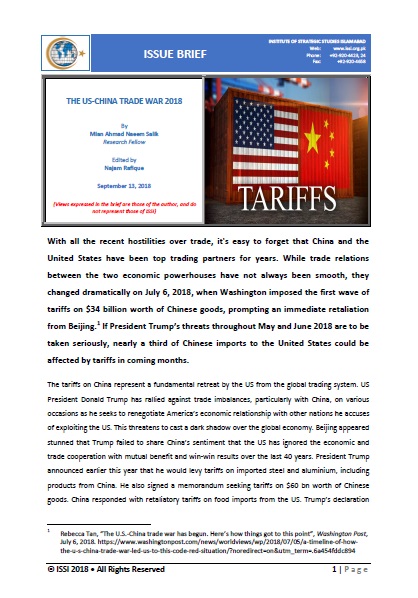With all the recent hostilities over trade, it’s easy to forget that China and the United States have been top trading partners for years. While trade relations between the two economic powerhouses have not always been smooth, they changed dramatically on July 6, 2018, when Washington imposed the first wave of tariffs on $34 billion worth of Chinese goods, prompting an immediate retaliation from Beijing.[1] If President Trump’s threats throughout May and June 2018 are to be taken seriously, nearly a third of Chinese imports to the United States could be affected by tariffs in coming months.
The tariffs on China represent a fundamental retreat by the US from the global trading system. US President Donald Trump has rallied against trade imbalances, particularly with China, on various occasions as he seeks to renegotiate America’s economic relationship with other nations he accuses of exploiting the US. This threatens to cast a dark shadow over the global economy. Beijing appeared stunned that Trump failed to share China’s sentiment that the US has ignored the economic and trade cooperation with mutual benefit and win-win results over the last 40 years. President Trump announced earlier this year that he would levy tariffs on imported steel and aluminium, including products from China. He also signed a memorandum seeking tariffs on $60 bn worth of Chinese goods. China responded with retaliatory tariffs on food imports from the US. Trump’s declaration coincided with the signing by 11 countries of a new Trans-Pacific trade pact that the United States withdrew from in 2017. The US had a $375.2 bn trade deficit with China in 2017 and had demanded the deficit be slashed by at least $200 bn by 2020. [2] The announcement underlines concern about rising US protectionism across the world Both the US and China are targeting each other’s weakest points — the US is targeting China’s future technological capacity, and China is responding by targeting US exporters’ present revenues.[3]
















